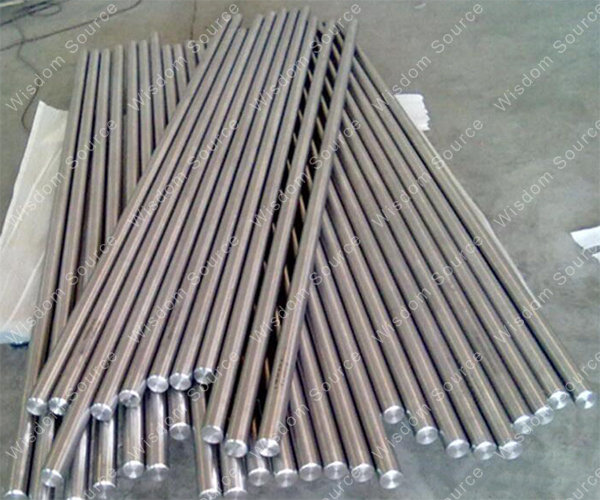Titanium Alloy: How The “King of Corrosion Resistance” In The Chemical Industry Can Solve The Century-Old Corrosion Dilemma
Titanium Alloy: How The “King of Corrosion Resistance” In The Chemical Industry Can Solve The Century-Old Corrosion Dilemma
The high temperature, high pressure, and strong corrosive environments in chemical production have allowed the life of equipment to be calculated in months. A stainless steel reactor can only support concentrated hydrochloric acid for half a year, and the emergence of titanium alloy equipment has extended this cycle to 30 years-this silent material revolution is reshaping the safety and efficiency logic of the chemical industry from its roots.
I. The Five Genes Of Titanium Alloy To The Throne Of Chemical Materials
1. Corrosion resistance: the ultimate nemesis of corrosive media
1) Chlor-alkali industry: In wet chlorine gas at 80℃, the annual corrosion rate of titanium is <0.01mm, which is 1/500 of stainless steel.
2) Strong acid system: In the environment of fuming nitric acid (concentration 98%), the TIO₂ oxide film (3-6nm) on the titanium surface realizes self-healing protection
3) Seawater scene: The pitting corrosion resistance equivalent PREN value reaches 40, far surpassing the 25 of stainless steel, and it has become the first choice for seawater cooling systems.
2. Mechanical properties: the perfect balance between lightweight and high strength
Material |
Density (g/m3) |
Tensile Strength
(MPa) |
Strength to
Weight Ratios |
SS304 |
8.00 |
520 |
65 |
Alloy C276 |
8.90 |
790 |
89 |
Ti Gr2 |
4.50 |
440 |
98 |
3. Temperature span: global coverage from -196℃ to 600℃
1) The liquid nitrogen storage tank (-196℃) adopts Ti-5Al-2.5Sn alloy, with a fracture toughness of 70MPa√m
2) The titanium reactor in the PTA device (230℃/5MPa), which runs continuously for 100,000 hours without failure
4. Cleanliness characteristics: Surface roughness of the guardian of pharmaceutical grade production
1) Ra<0.8µm, 50% lower than stainless steel, to prevent the growth of microorganisms
2) The ion precipitation amount is <0.1µg/cm2·day, which meets the FDA drug production specifications
5. Economic benefits: the whole life cycle cost revolution
1) Within the 30-year service cycle, the total cost of titanium equipment is only 1/3 of that of stainless steel (including maintenance and replacement costs)
2) After a chlor-alkali plant switched to a titanium electrolytic cell, the annual leakage accidents were reduced by 92%, and the increased production revenue reached 37 million yuan/year.

II. Four Core Battle-Grounds: Chemical Application Map of Titanium Alloy
1. The reaction system is tough
1) PTA oxidation reactor: titanium lining resists the composite corrosion of acetic acid +bromide at 130℃
2) Urea synthesis tower: Titanium-palladium alloy (Ti-0.2Pd) is resistant to corrosion of ammonium carbamate at 200℃
2. Heat transfer system upgrade
1) Sea water cooler: the wall thickness of the titanium tube is only 0.5mm, and the heat transfer efficiency is increased by 40%. 2) Washing line heat exchanger: resistant to 70℃ sulfuric acid corrosion, life is extended to 15 years
3. Fluid delivery revolution
1) Titanium tetrachloride delivery pump: Gr5 impeller speed reaches 2900rpm, and the wear rate drops by 80%
2) Chlorine dioxide pipeline: titanium flange sealing surface to achieve zero leakage
4. Extreme environmental breakthrough
1) LNG storage tank: titanium alloy liner can withstand low temperature stress of -162℃
2) Incinerator flue gas system: Gr12 alloy (Ti-0.3 Mo-0.8Ni) resistant to high temperature chlorine corrosion
III. Challenges And Breaking The Game: The Way To Solve The Cost Dilemma
1. Innovative structural design
1) Composite lining technology: 1.5mm titanium plate + carbon steel matrix, material cost is reduced by 65%
2) Equal strength topology optimization: reduce weight by 30% through CAE simulation to maintain mechanical properties
2. Advanced manufacturing technology
1) Electron beam cold bed smelting (EBCHM): Increase the titanium yield from 60% to 85%%
2) Laser selective melting (SLM): manufacturing complex flow channel valve bodies to reduce the risk of weld corrosion
3. Circular economy model
1) The recovery rate of waste titanium equipment exceeds 95%, and the cost of recycled titanium is only 40% of the original titanium. 2) A petrochemical company has established a shared library of titanium equipment, and the asset utilization rate has increased by 300%. 4. Future battlefield: The evolution direction of intelligent titanium alloys
1) Self-sensing titanium equipment: titanium pipes implanted with optical fiber sensors to monitor stress corrosion in real time
2) Nano-modified surface: TIO₂ nanotube array coating, sterilization rate increased to 99.9%
3) 4D printing technology: shape memory titanium alloy valve to achieve temperature adaptive deformation
Conclusion: Material Philosophy From Passive Anti-Corrosion To Active Defense
The rise of titanium alloy in the chemical industry marks the cognitive transition of mankind from “confrontation with corrosion” to “symbiosis with corrosion”. As John Allison, president of the American Society of Materials, said: “Titanium alloy teaches us not only material selection, but also how to reconcile with nature at the molecular level.” When the titanium alloy reactor has been operating safely in a strong acid for decades, it carries not only the innovation of chemical production, but also the ultimate answer of industrial civilization to the proposition of sustainable development.
